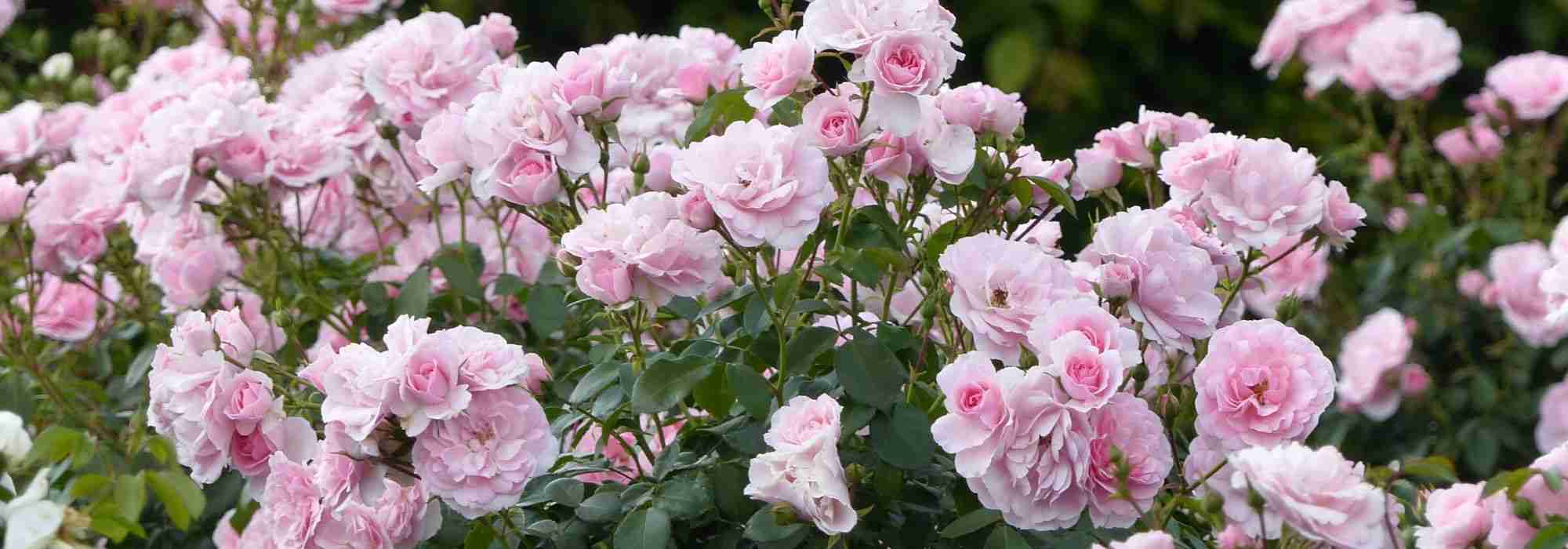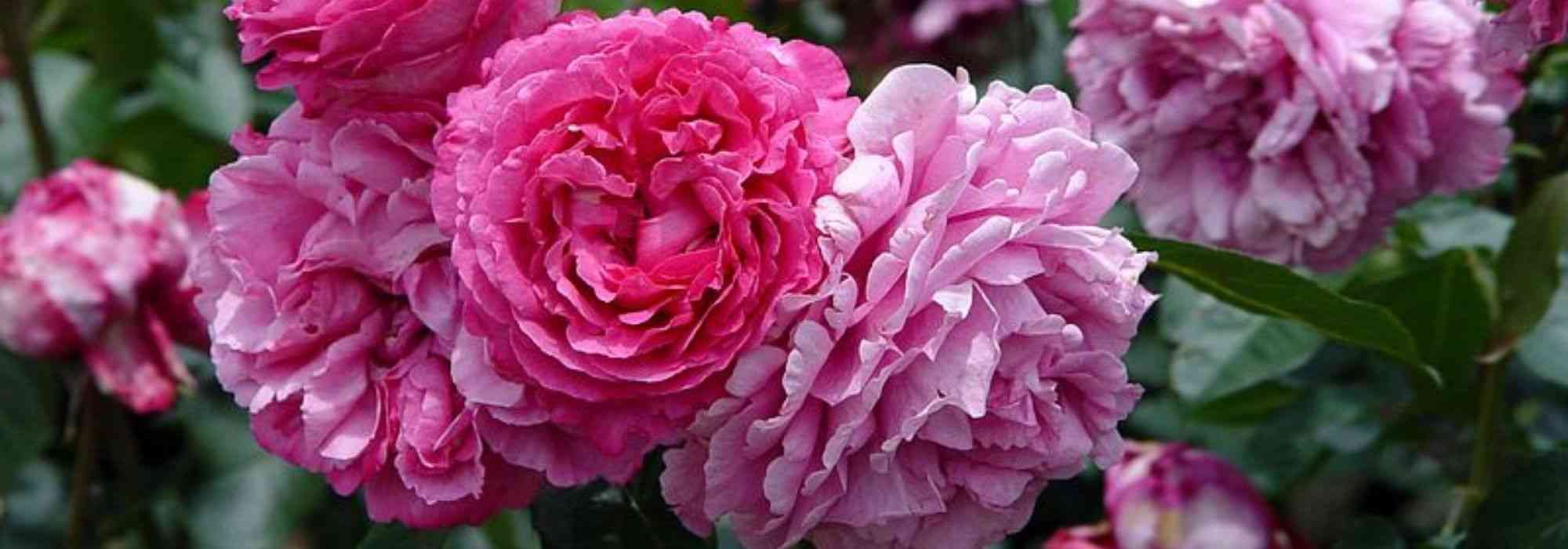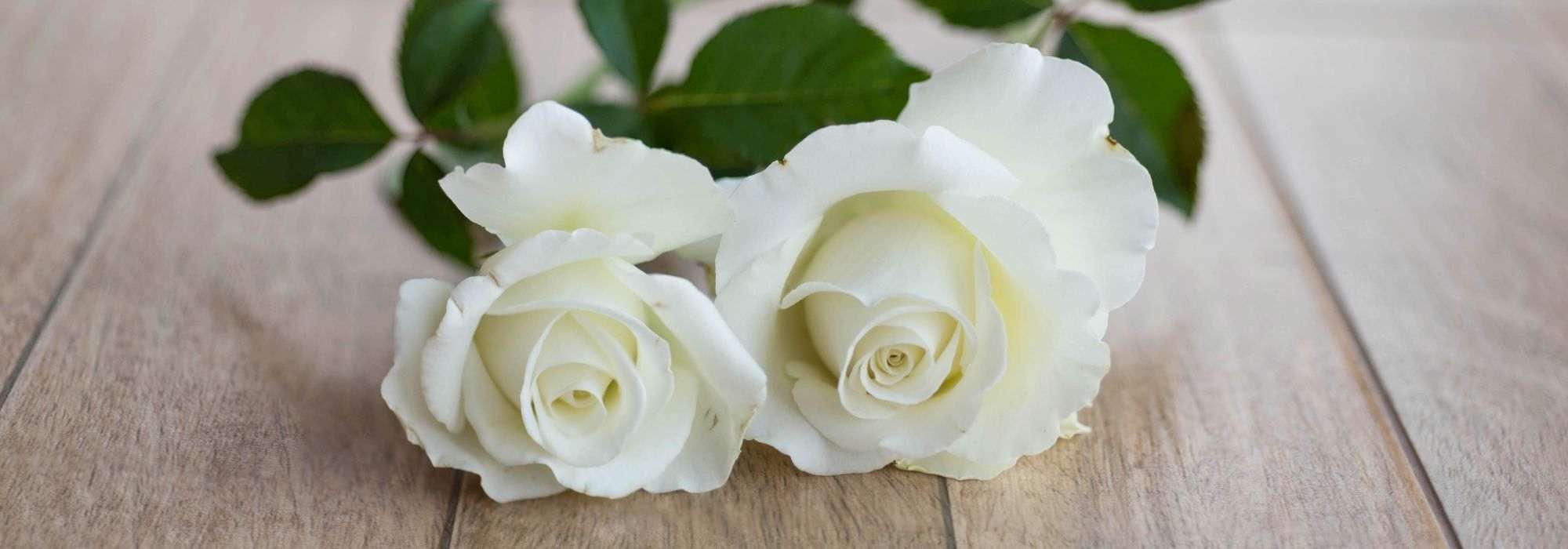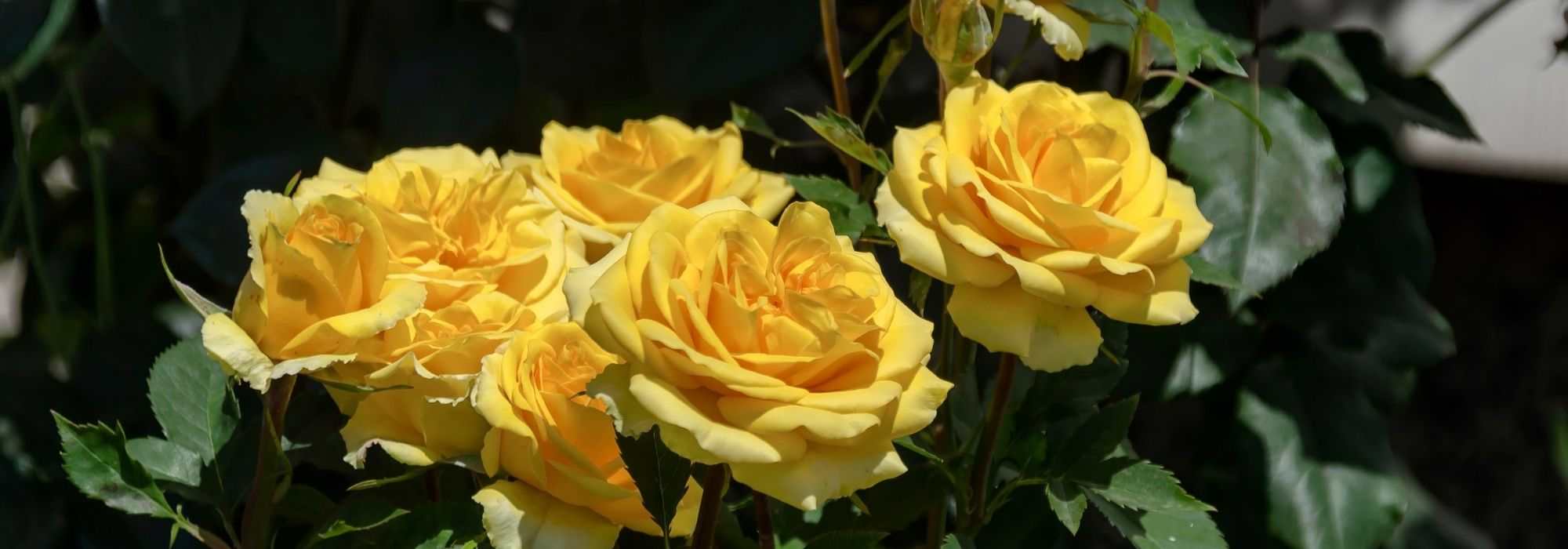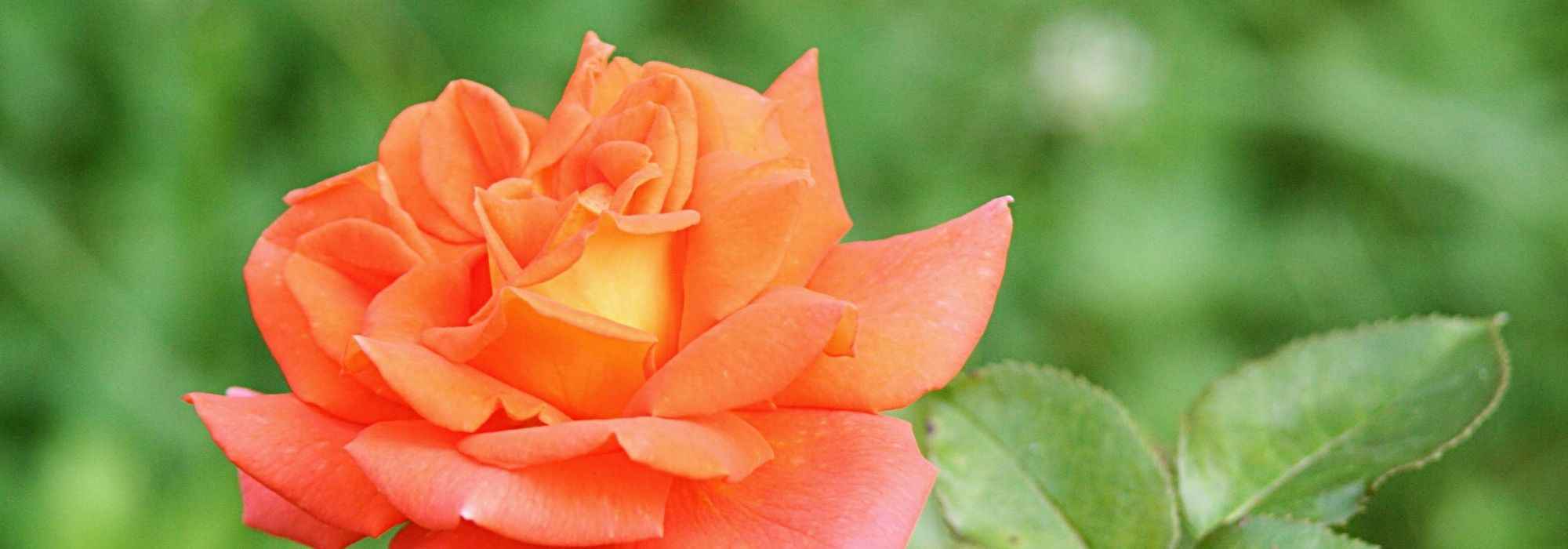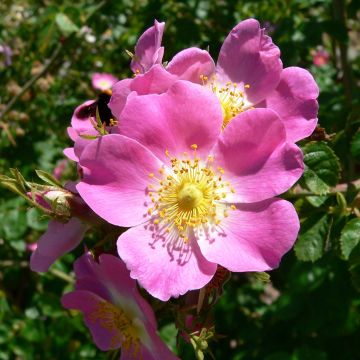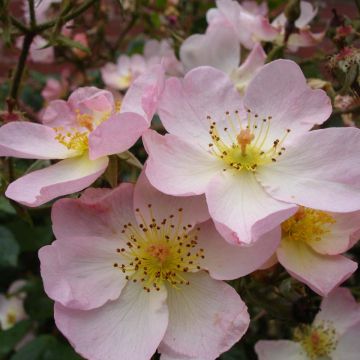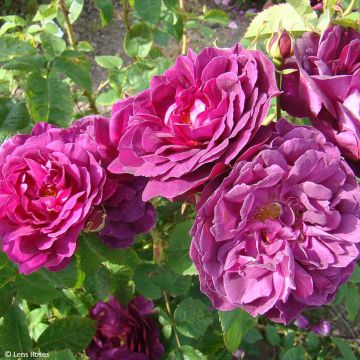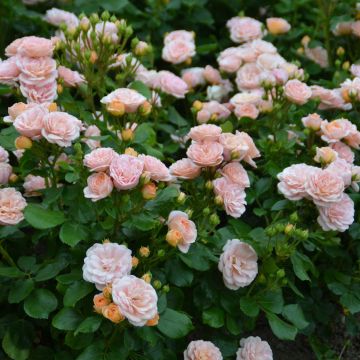

Rosa 'Marc Chagall' - Hybrid Tea Rose
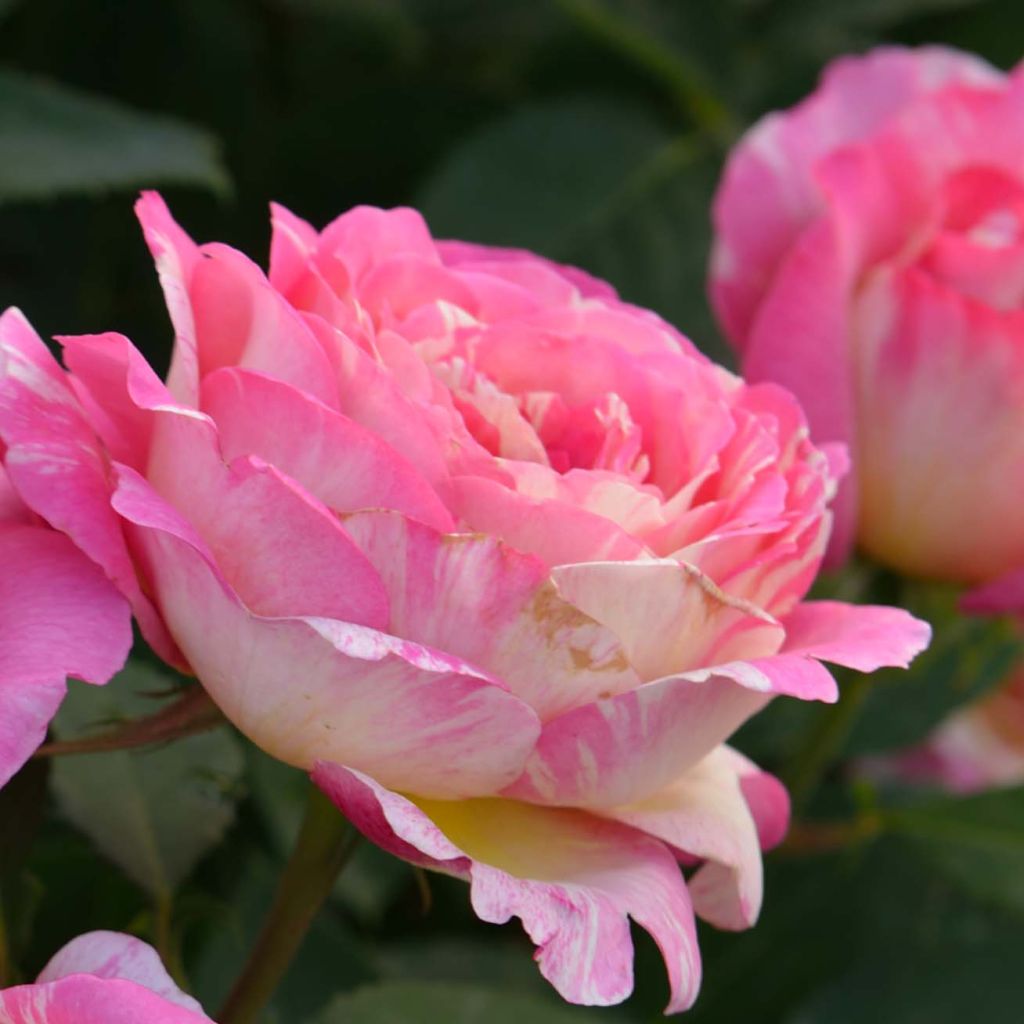

Rosa 'Marc Chagall' - Hybrid Tea Rose
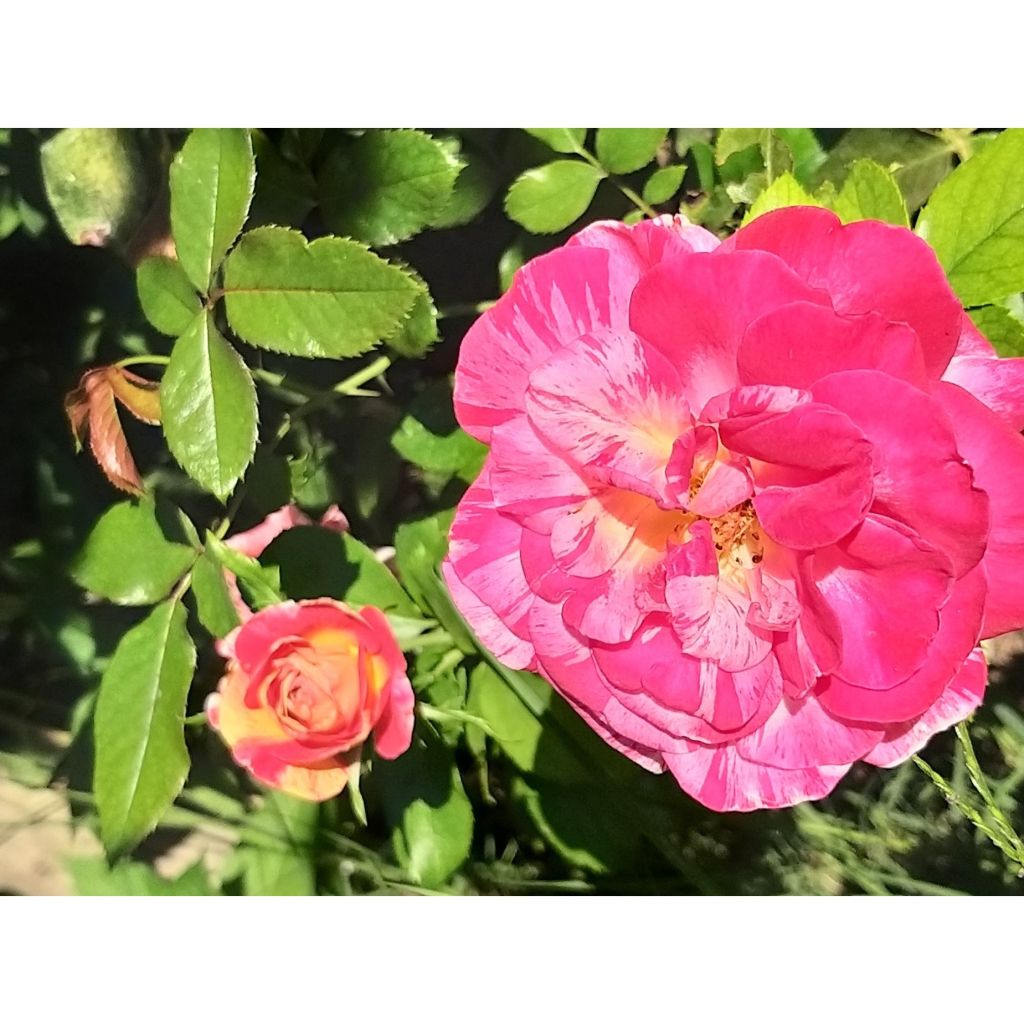

Rosa 'Marc Chagall' - Hybrid Tea Rose
View more pictures
Hide images
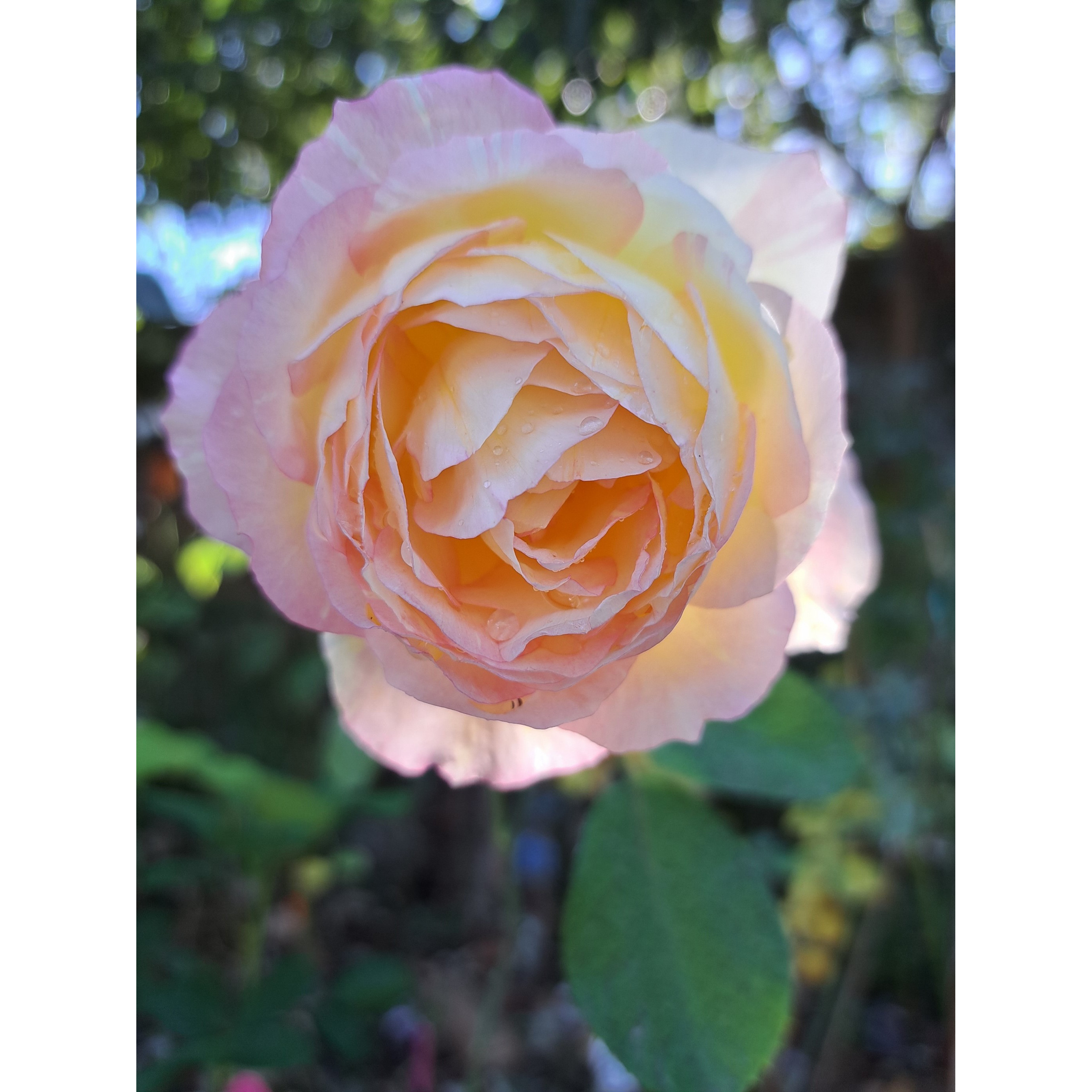
Thierry P.

November flowering - image 34 - In the rain.
Thierry P. • 84 FR

Thierry P.

November flowering - image 33 - Budding under the rain.
Thierry P. • 84 FR
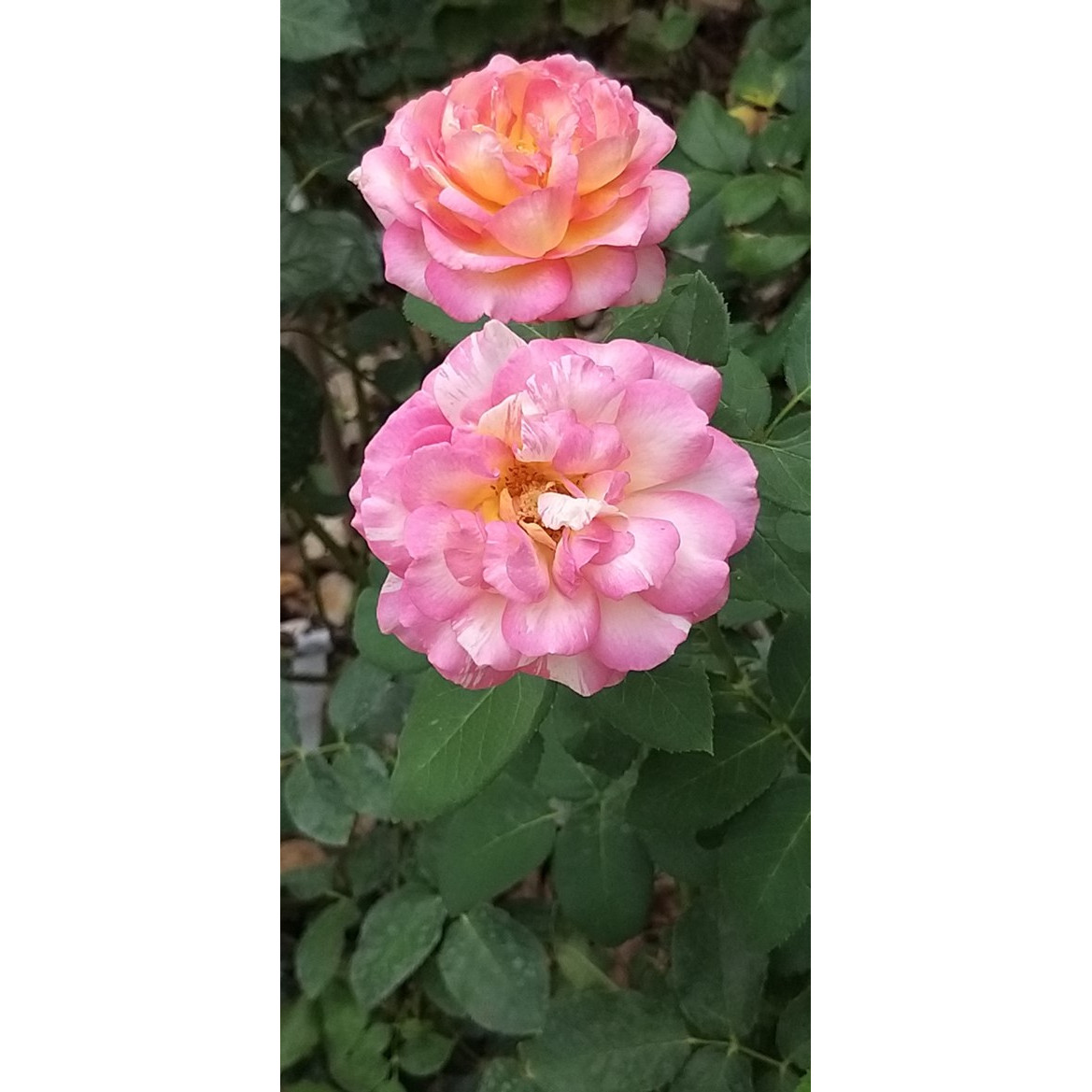
Thierry P.

August flowering - image 30
Thierry P. • 84 FR
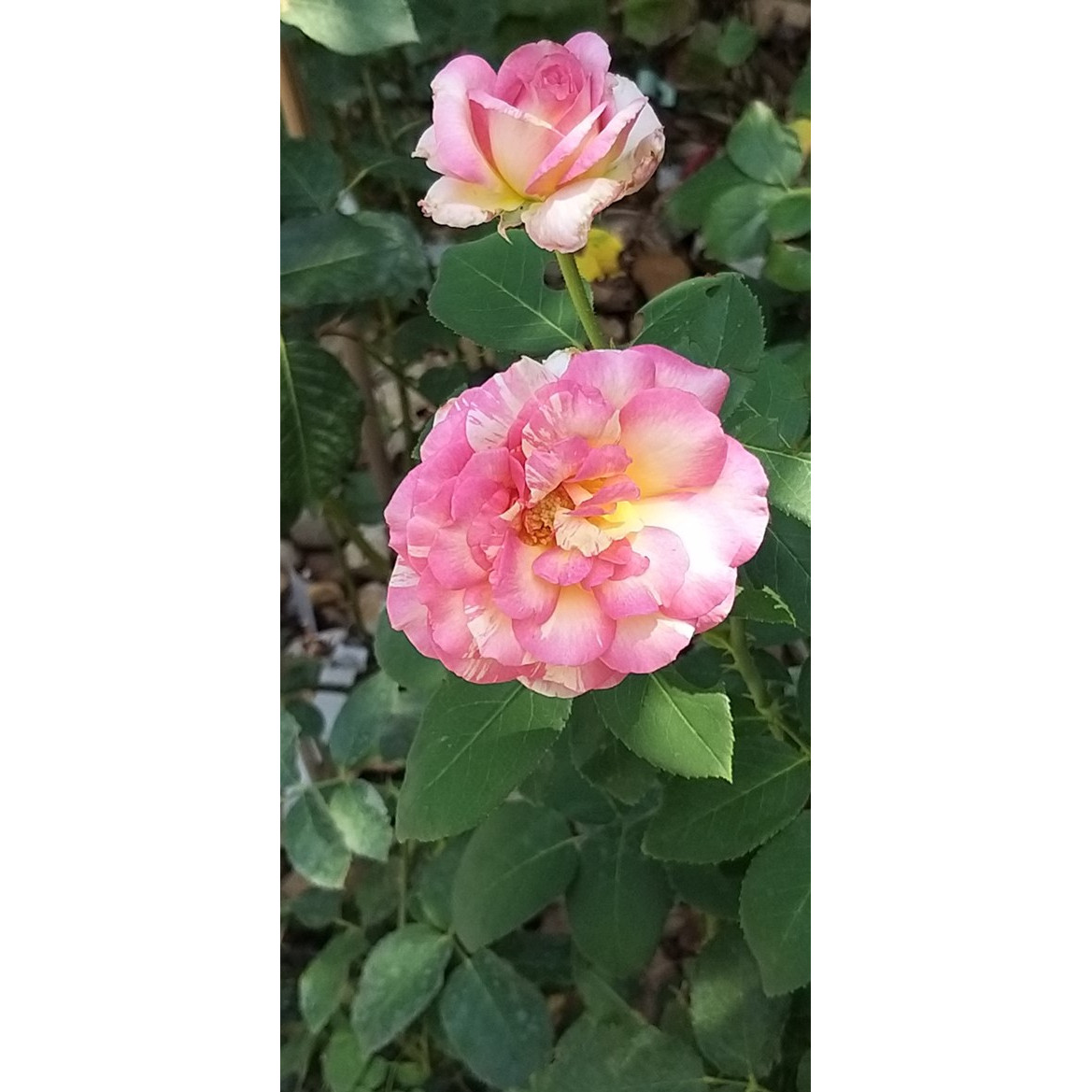
Thierry P.

August flowering - image 29
Thierry P. • 84 FR
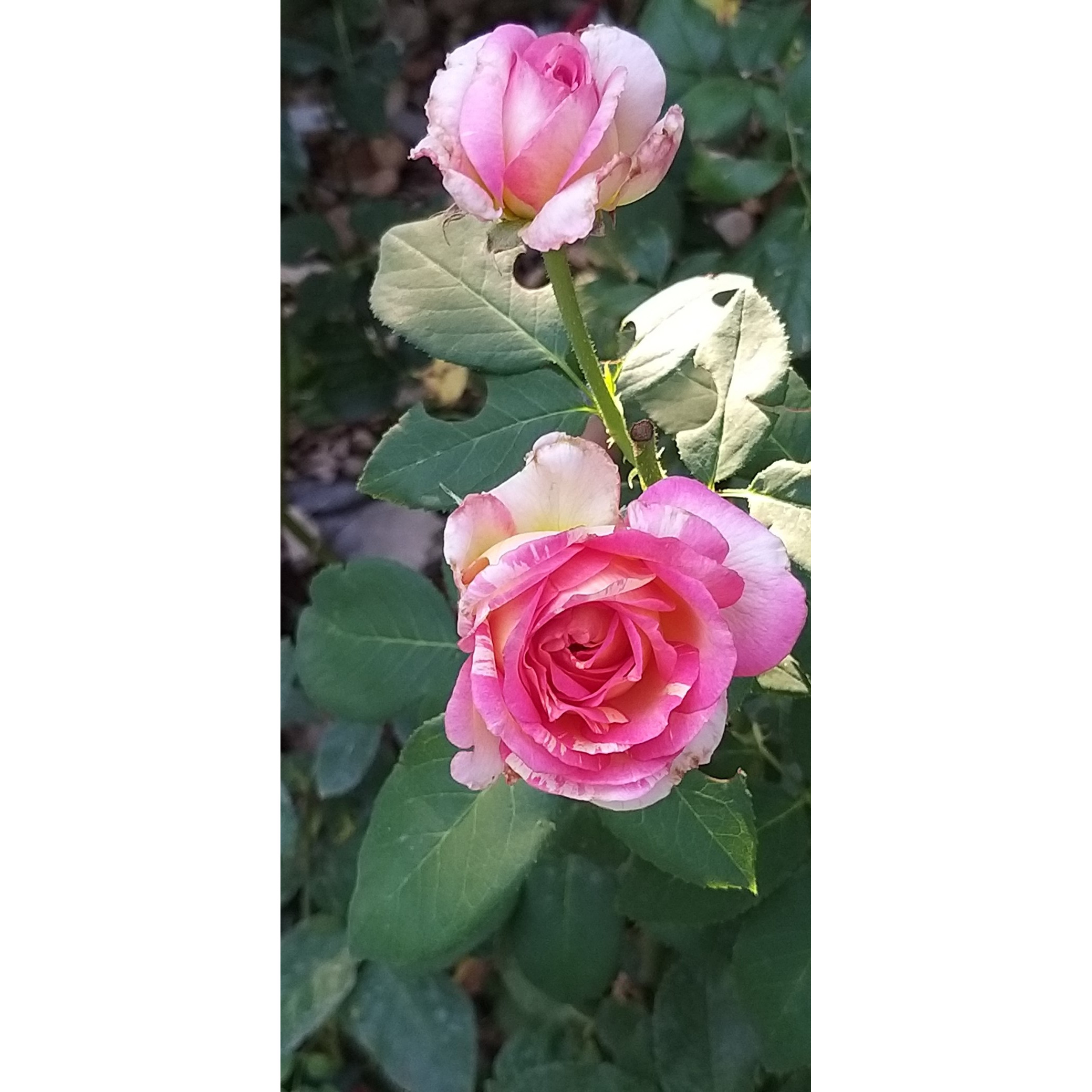
Thierry P.

August flowering - picture 28 - The leafcutter bee (mégachile) has been around.
Thierry P. • 84 FR
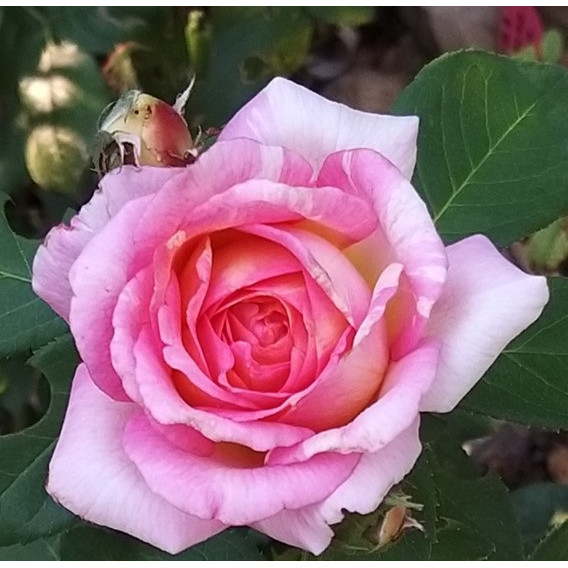
Thierry P.

August flowering - image 26 - Flower and buds.
Thierry P. • 84 FR
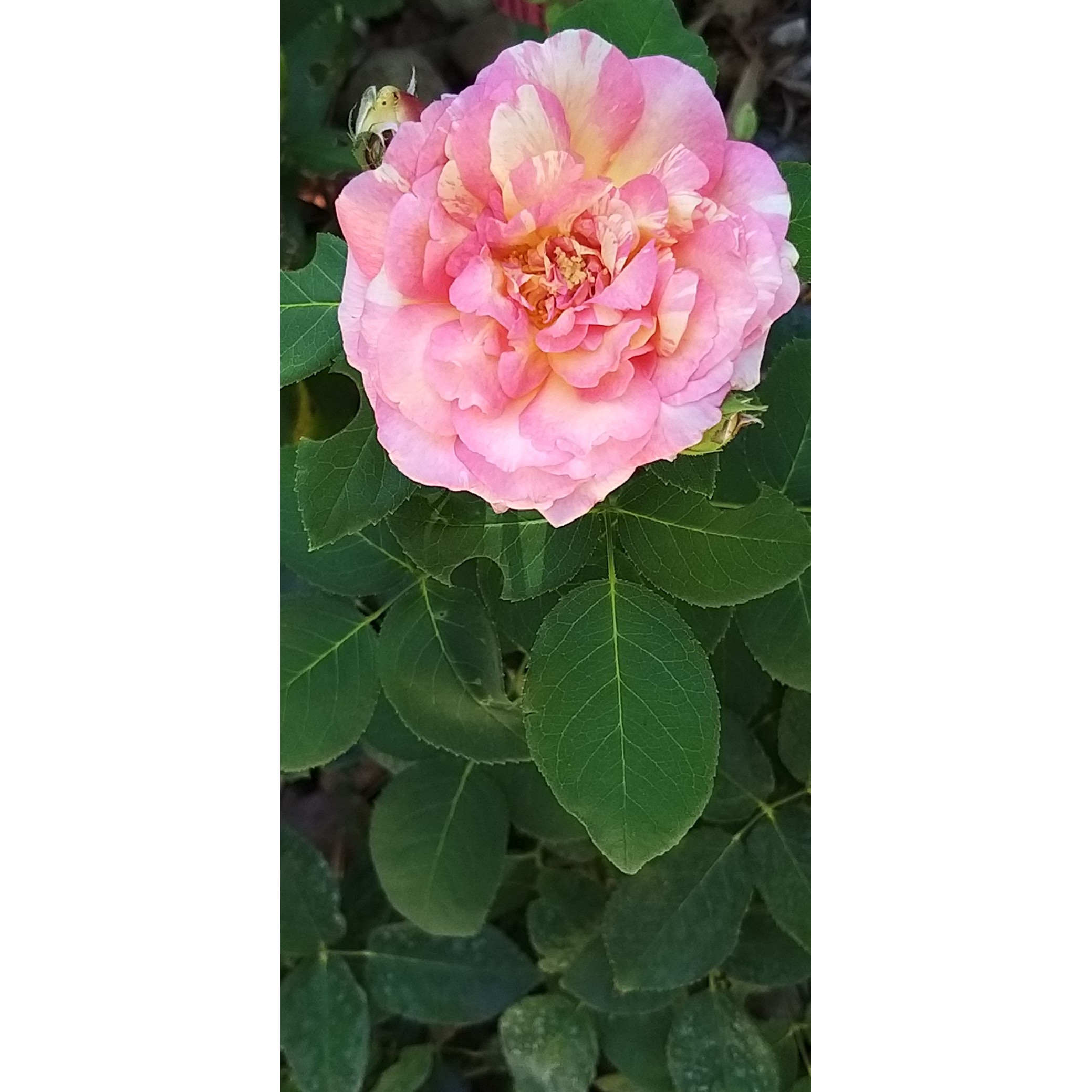
Thierry P.

August flowering - image 27 - Fully bloomed flower, buds, and foliage.
Thierry P. • 84 FR

Thierry P.

August flowering - image 25 - Flower and bud.
Thierry P. • 84 FR
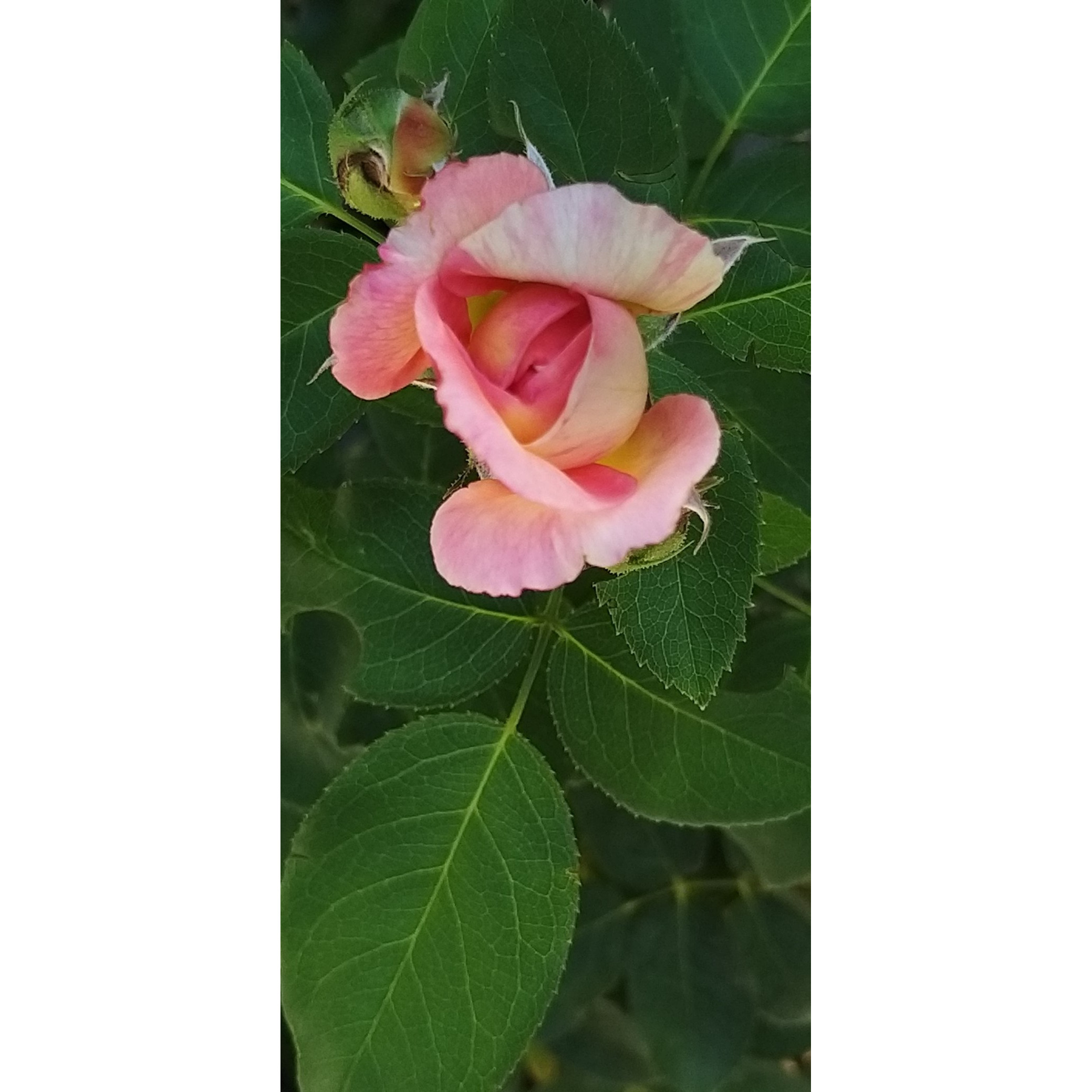
Thierry P.

August flowering - image 24 - In buds.
Thierry P. • 84 FR
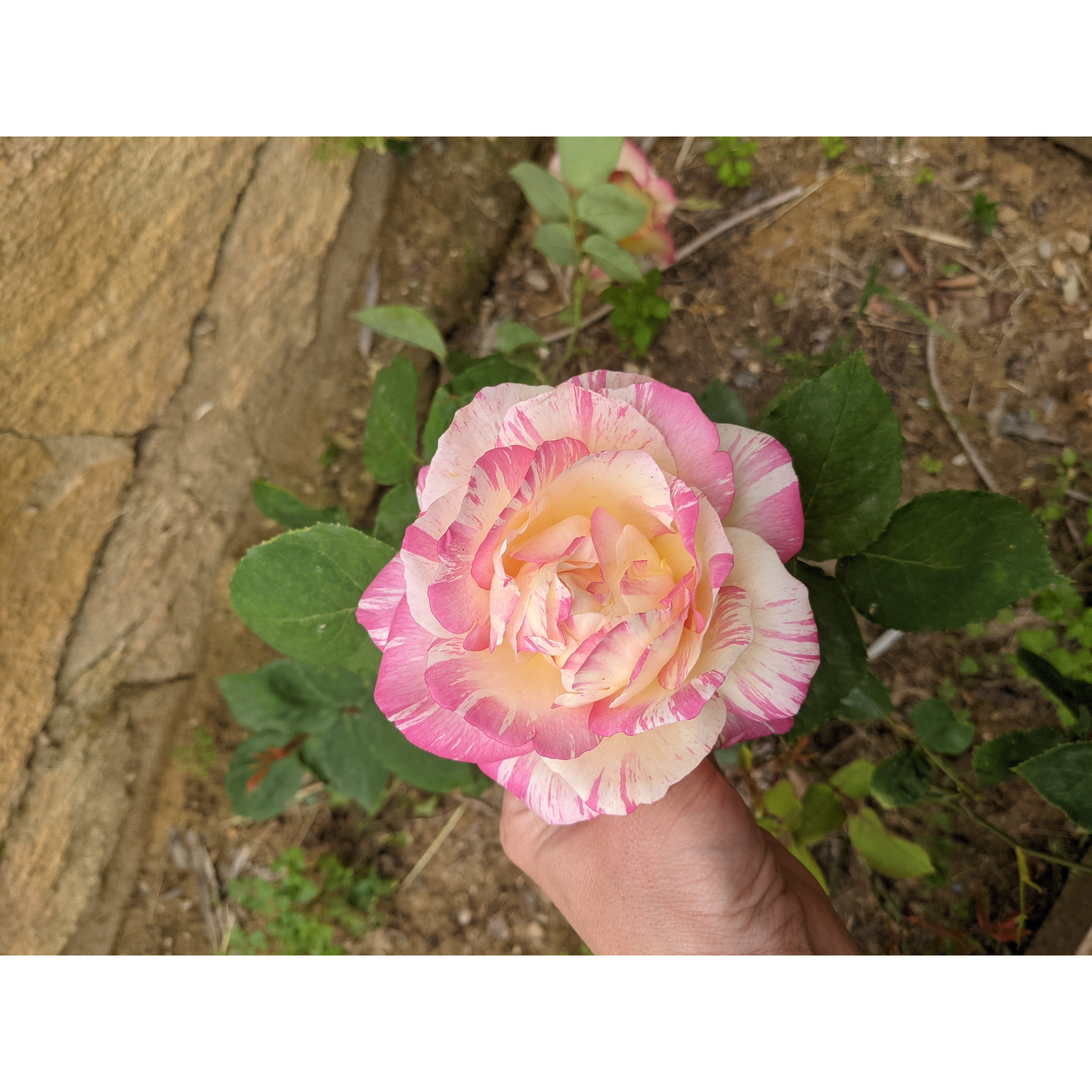
Perle R.

I'm sorry, but the customer review you provided does not contain any text to be translated. If you have the actual content of the review in French, please provide it so that I can assist you with the translation into British English. Thank you.
Perle R. • 30 FR

Thierry P.

No text to translate.
Thierry P. • 84 FR
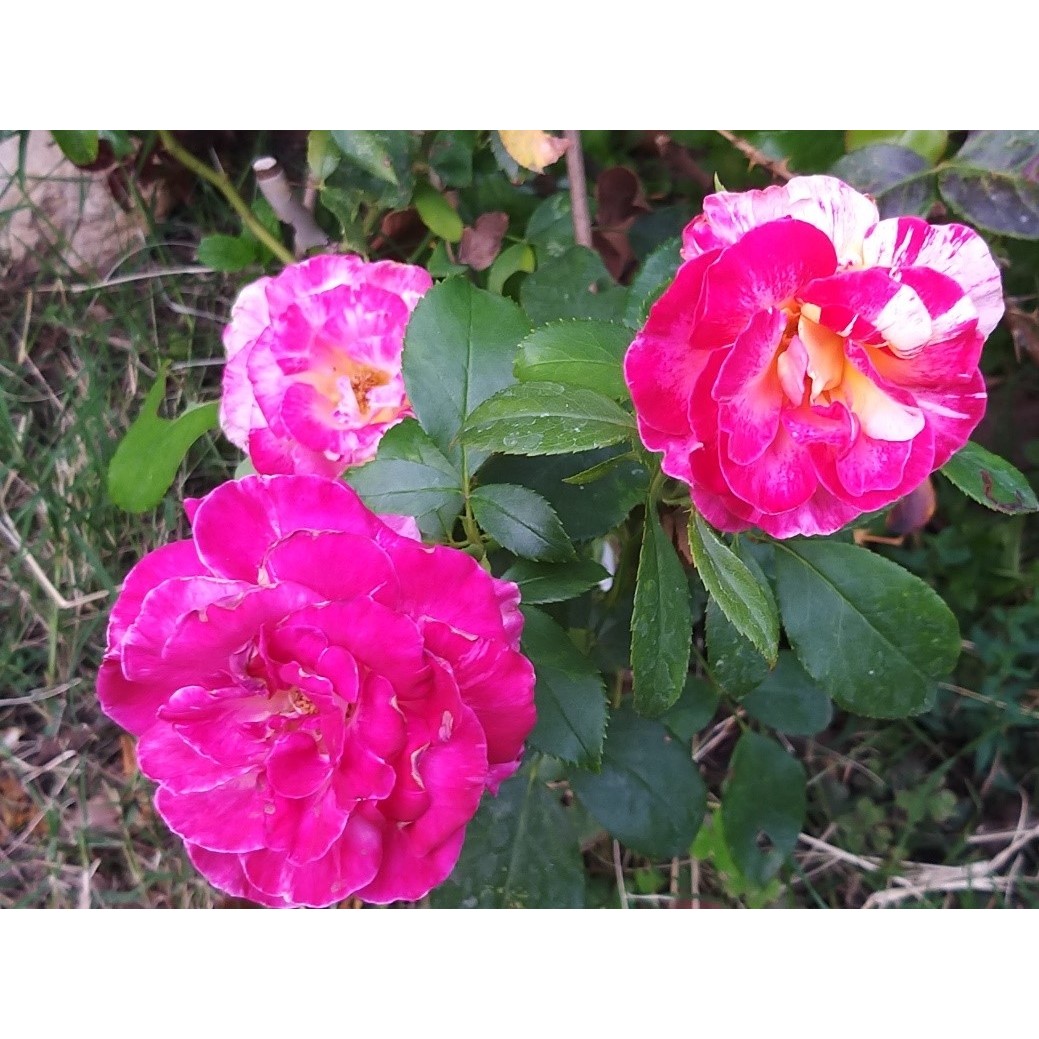
Thierry P.

September flowering - image 19
Thierry P. • 84 FR
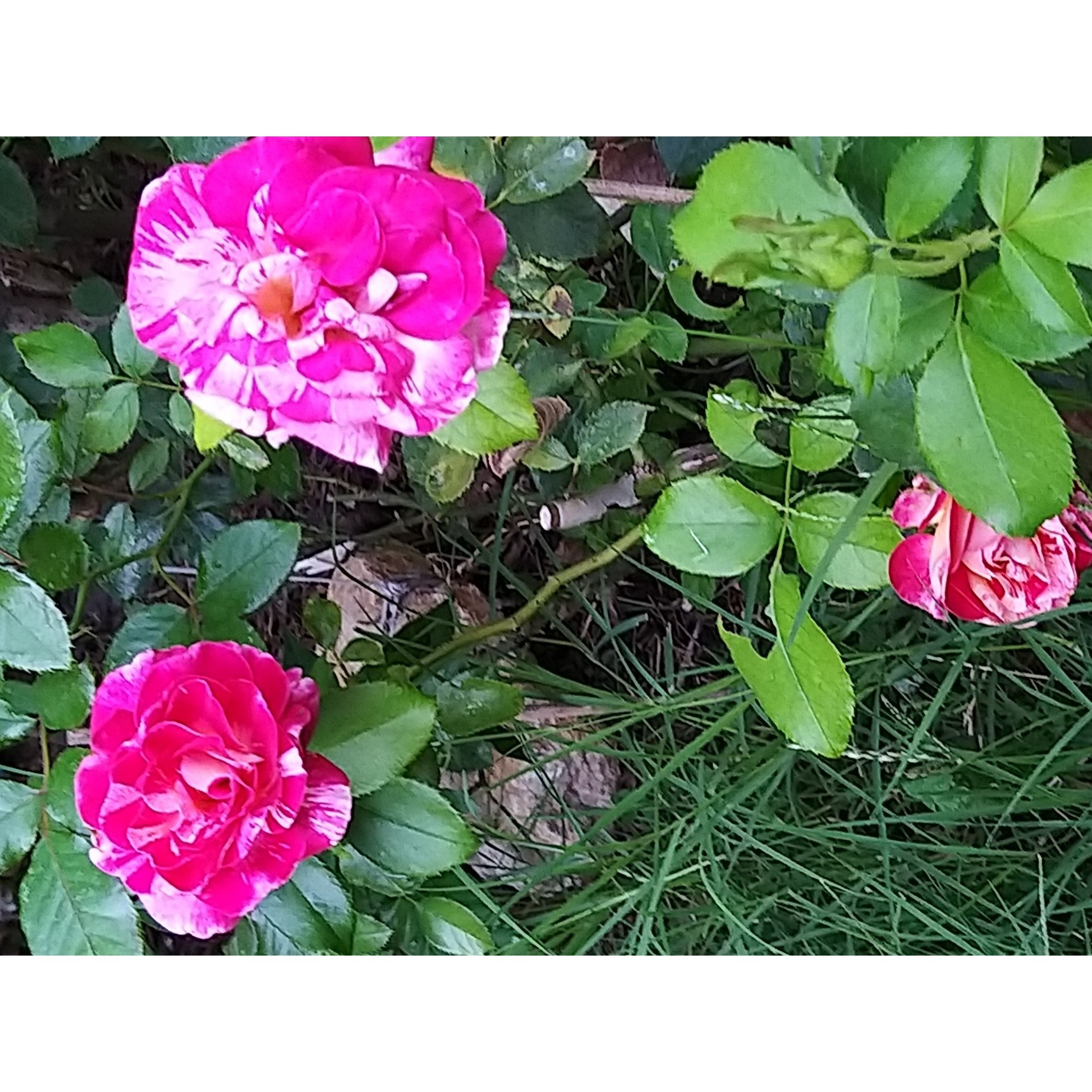
Thierry P.

September flowering - image 14
Thierry P. • 84 FR
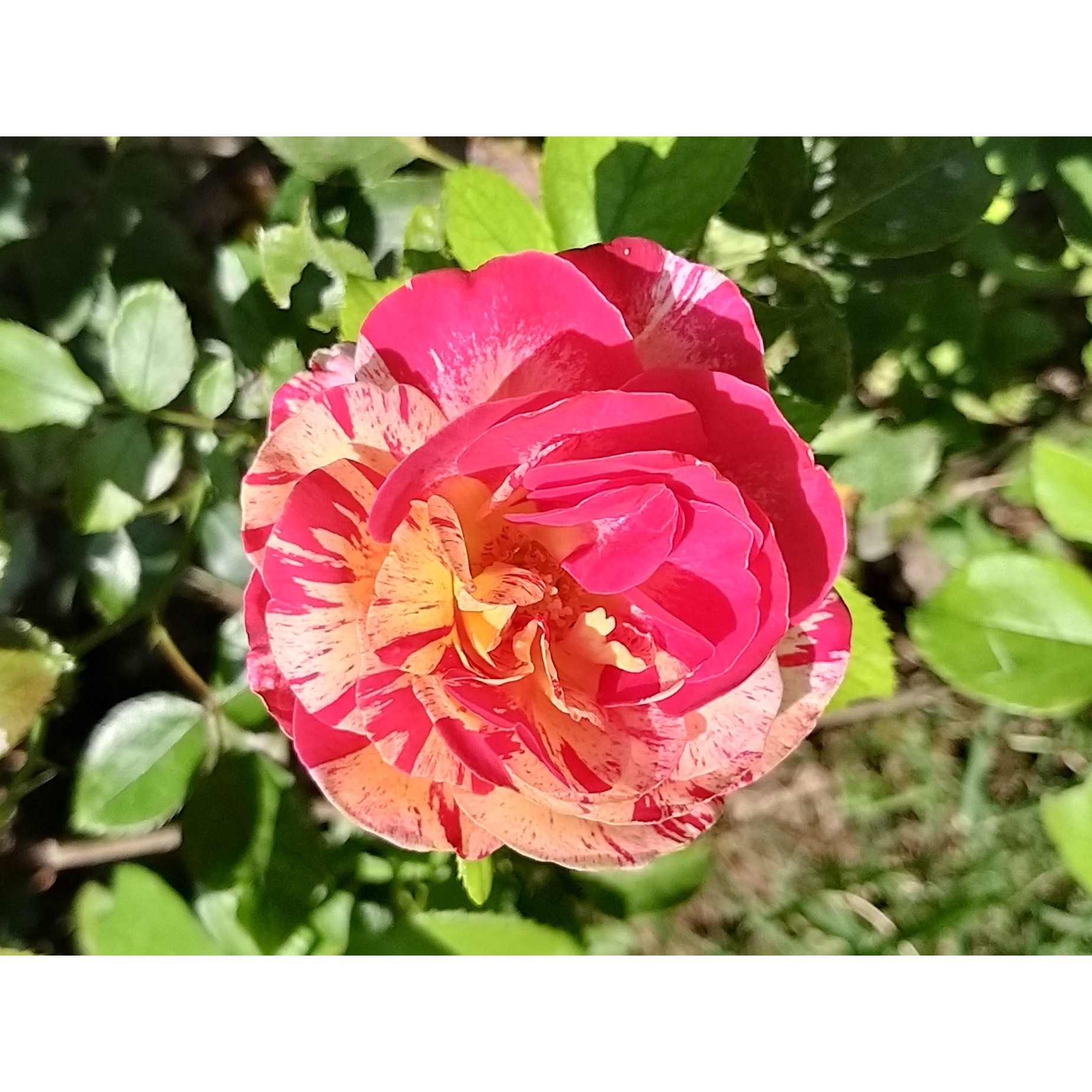
Thierry P.

August flowering - image 12 - Like the Camille Pissaro variety, each rose is unique.
Thierry P. • 84 FR
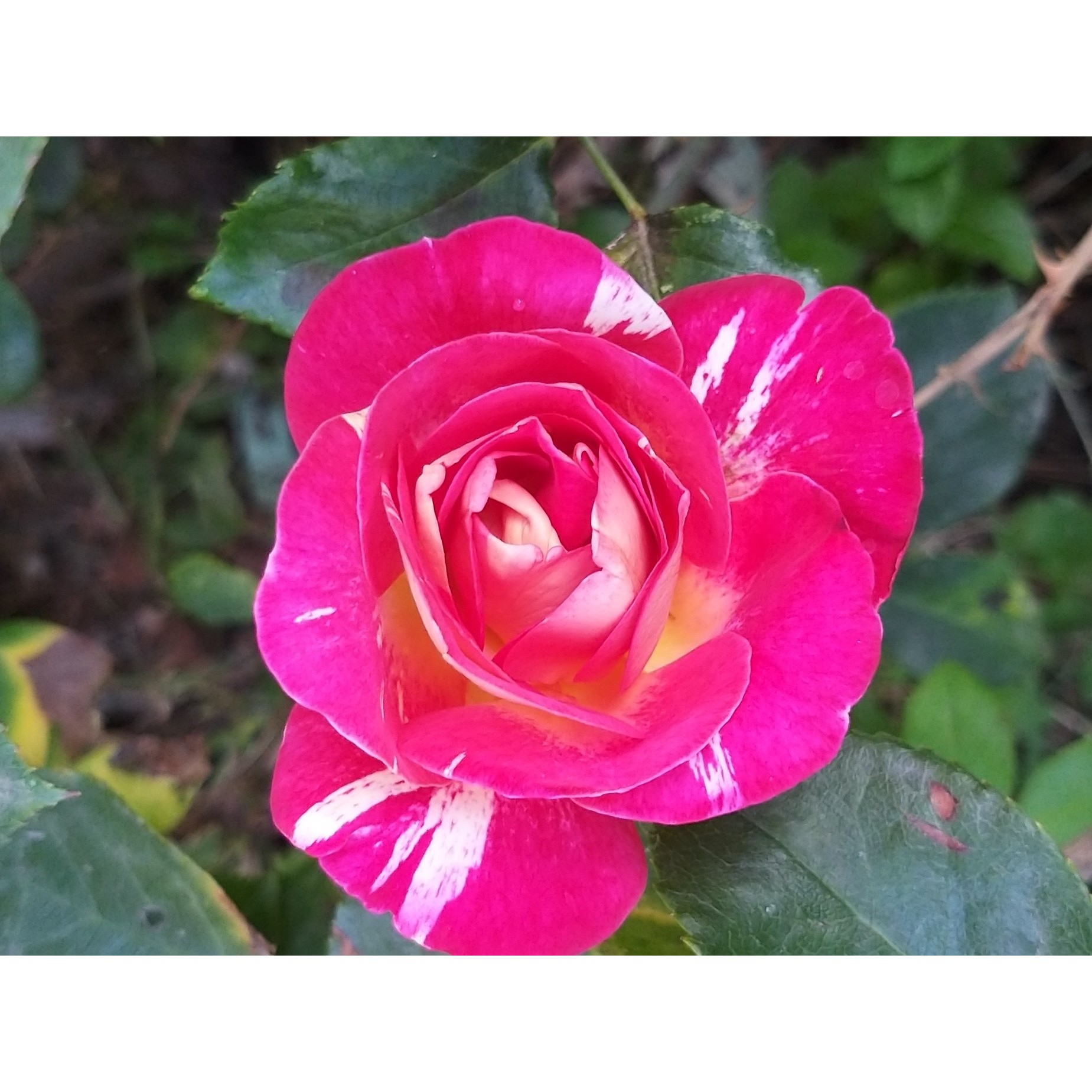
Thierry P.

Flowering in August - image 9
Thierry P. • 84 FR
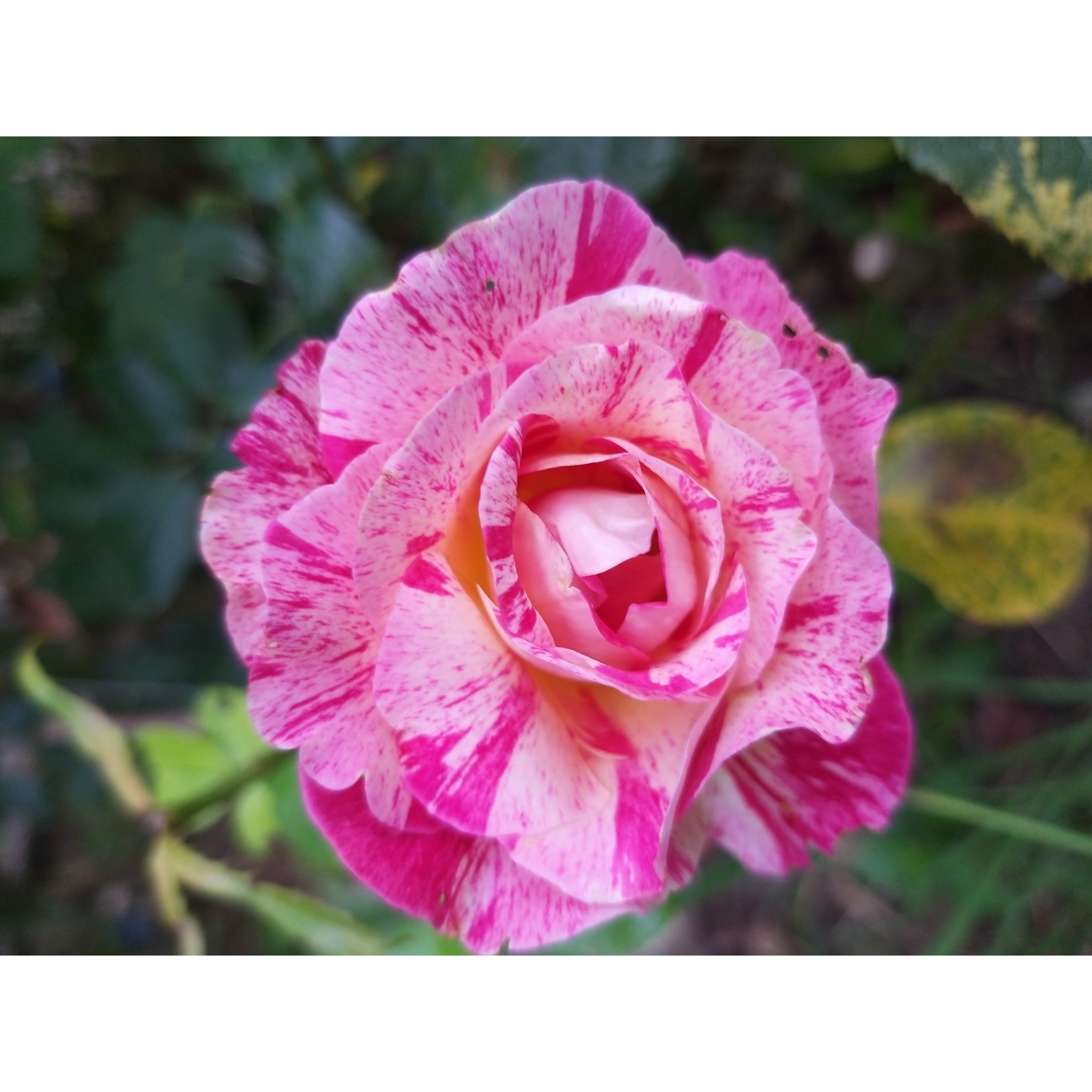
Thierry P.

N/A
Thierry P. • 84 FR
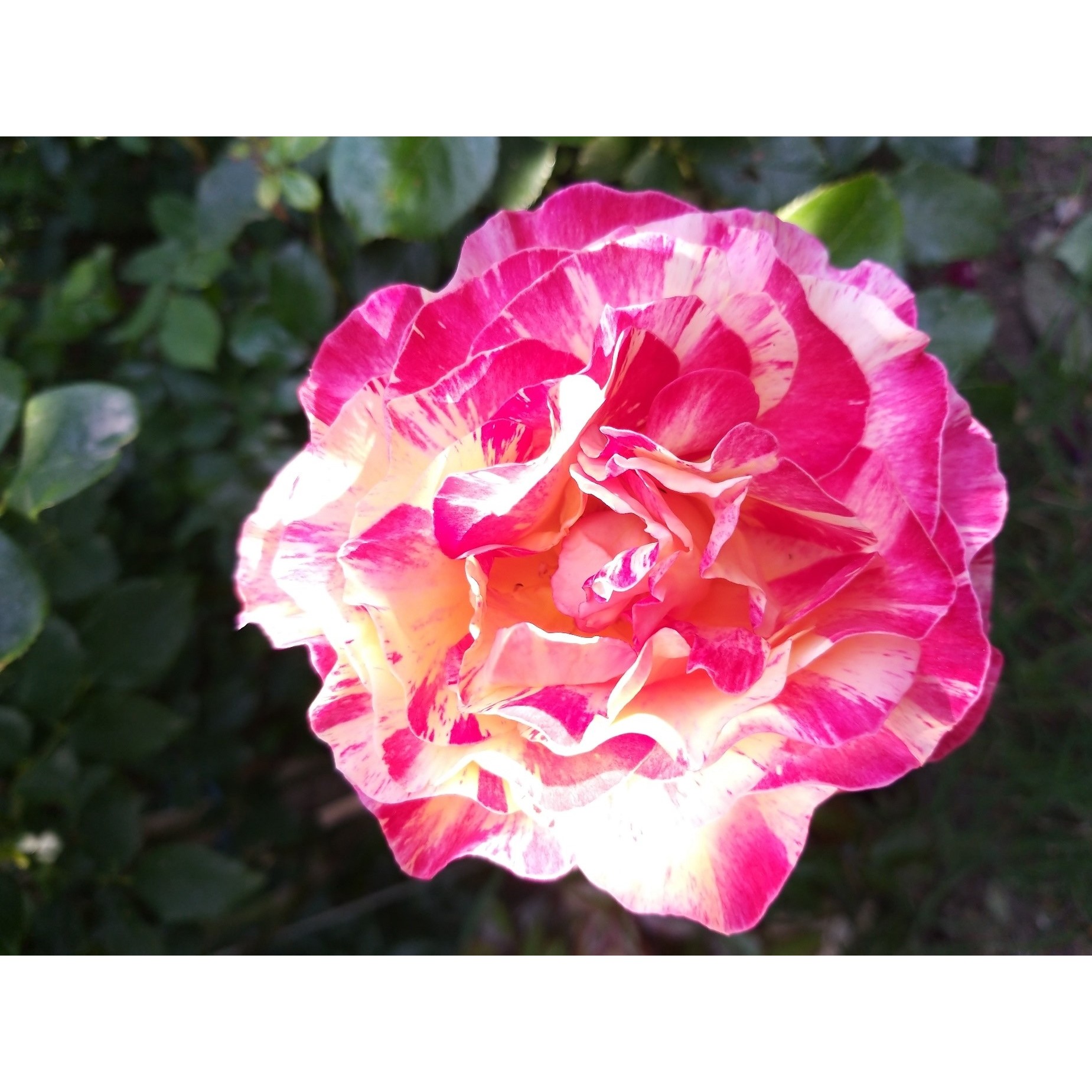
Thierry P.

May flowering - image 1
Thierry P. • 84 FR
Rosa 'Marc Chagall' - Hybrid Tea Rose
Rosa Marc Chagall® 'Delstrirojacre'
Delstrirojacre
Superb rose bush, excellent recovery (bare roots).
Nicolas, 01/11/2023
Special offer!
Receive a €20 voucher for any order over €90 (excluding delivery costs, credit notes, and plastic-free options)!
1- Add your favorite plants to your cart.
2- Once you have reached €90, confirm your order (you can even choose the delivery date!).
3- As soon as your order is shipped, you will receive an email containing your voucher code, valid for 3 months (90 days).
Your voucher is unique and can only be used once, for any order with a minimum value of €20, excluding delivery costs.
Can be combined with other current offers, non-divisible and non-refundable.
Home or relay delivery (depending on size and destination)
Schedule delivery date,
and select date in basket
We guarantee the quality of our plants for a full growing cycle, and will replace at our expense any plant that fails to recover under normal climatic and planting conditions.
Description
The 'Marc Chagall' Rose pays a beautiful tribute to the accomplished but somewhat unclassifiable artist that Marc Chagall was. This modern bush produces clusters of large double flowers, whose colour is decidedly pure, cheerful and bright, with a delicate blend of shades of pink, yellow and cream-white. A foliage of beautiful light green adorns this not-very-tall but resourceful bush, whose flowering extends from June to October. An astonishing rose that will be noticed in flower beds and whose subtly scented flowers are superb in a vase!
'Marc Chagall' or 'Delstrirojacre' is a modern shrub rose, a hybrid tea rose, obtained in 2013 by the rose breeder Delbard. It belongs to the ''Painters'RRoses'series, as presented: " n composing these roses, nature, aided by the hybridiser, took its brush to pay tribute to the Impressionists. The colourful pigments of the petals evolve with the intensity of light; the more they are exposed to it, the brighter their colours will be."With a bushy and compact habit, this bush reaches approximately 70 cm (28in) in height and 60 cm (24in) in width at maturity, with rapid growth. It produces strong branches that bear elegant light green foliage, shiny, well-filled, and disease-resistant if the growing conditions are correct. Throughout the summer, if care is taken to remove faded flowers, its medium-sized, double, somewhat informal flowers blossom with thin, watercolour-like petals, blending all shades of pink and yellow. They are solitary or grouped in bouquets, carried at the end of long shoots from the current year or appearing on 2-year-old stems. The fragrance of the flowers, relatively light, is both floral and fruity, dominated by notes of peach.
This rose, 'Marc Chagall',' with its softly scented watercolour flowers, is as beautiful in flower beds as in bouquets. It can be placed alone in a small garden or planted in groups of 3 specimens among low perennials such as violets, carnations, dwarf asters or aubrietas. Its modest size makes it well-suited for cultivating in a large pot. It blends well in flower beds with low shrubs that flower in summer or autumn or mixed with light perennials and annuals such as Sea Kale, panicle phlox or tall foxgloves. It will be nicely enhanced in front of a boxwood or yew screen or, conversely, surrounded by a miniature hedge or a skillfully organised maze, as in Italian or French gardens. Its multicoloured roses go well with white, soft yellow or pink flowers in flower beds or bouquets.
Rosa 'Marc Chagall' - Hybrid Tea Rose in pictures
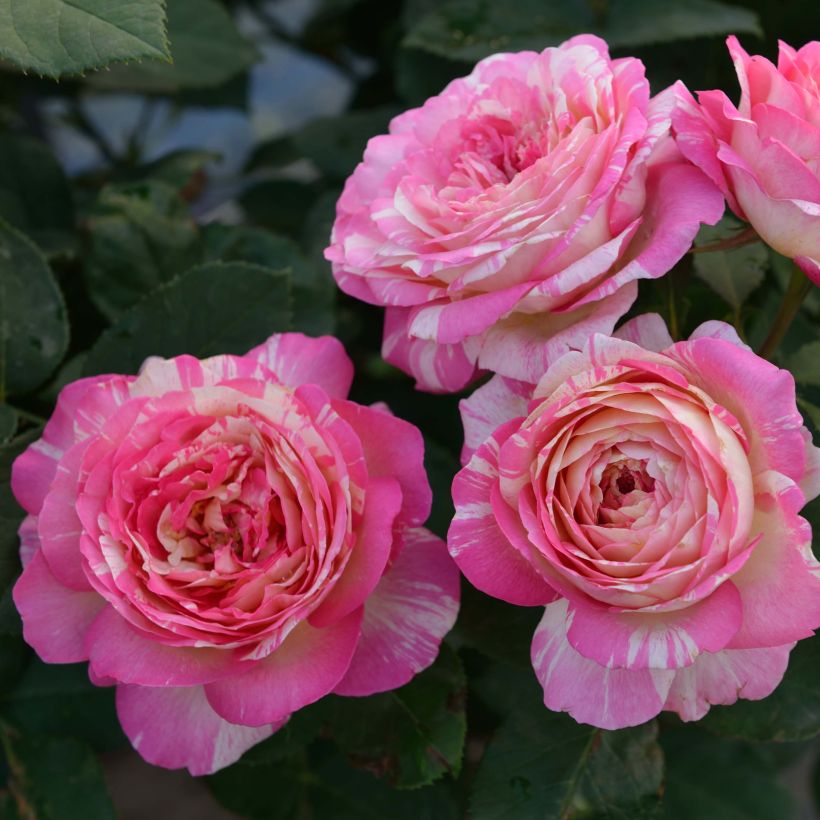

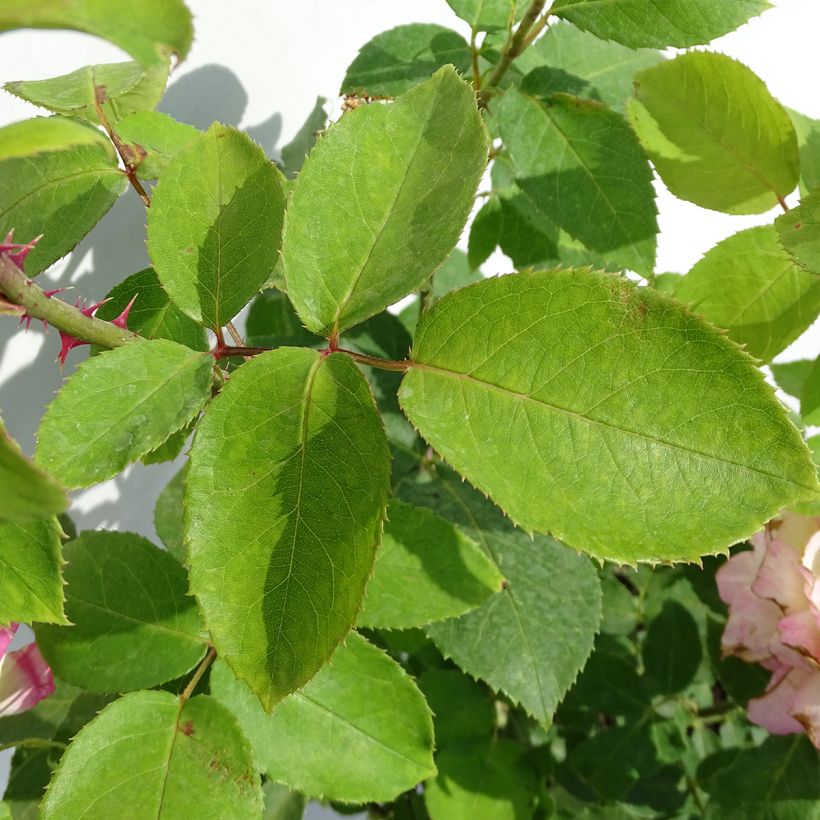

Plant habit
Flowering
Foliage
Botanical data
Rosa
Marc Chagall® 'Delstrirojacre'
Rosaceae
Delstrirojacre
Cultivar or hybrid
Rosa canina Laxa (Wrapped bare root), Rosa multiflora (3L/4L pot)
Planting and care
To plant your 'Marc Chagall' rose, choose a sunny or lightly shaded spot with well-worked soil that is not too heavy and has enough nutrients. Avoid planting in poor and excessively dry soils. Prepare the soil by crumbling it and adding an amendment, such as blood, fish and bone, at the bottom of the planting hole. After planting, water abundantly to remove air pockets and continue to water regularly for a few weeks to help the roots establish.
Pruning modern repeat flowering roses is important for flowering and should be done in three stages:
1. Regular maintenance pruning: During the season, regularly shorten the flowering branches and remove faded flowers along with their stem, leaving 2 or 3 leaves to encourage repeat flowering.
2. Preparatory autumn pruning: Lightly prune in preparation for the 'main' spring pruning. Note: This is not recommended in regions with cold winters as this could weaken the bush.
3. Spring pruning: In February-March, when the buds have become shoots 2 to 3 cm (1in) long, prune the young, strong branches to one-quarter of their length.
When pruning, always aim to remove dead wood, diseased branches, and weak shoots while opening up the centre of the bush. Retain the most vigorous branches, generally 3 to 6 well-positioned, to maintain an attractive habit. Always prune at a slant ½ cm or 1 cm (0in) above an outward-facing bud.
Roses may develop unsightly spots at the end of summer, but this is a natural occurrence and doesn't harm the rose's growth.
Planting period
Intended location
Care
Planting & care advice
-
, onOrder confirmed
Reply from on Promesse de fleurs
Similar products
Haven't found what you were looking for?
Hardiness is the lowest winter temperature a plant can endure without suffering serious damage or even dying. However, hardiness is affected by location (a sheltered area, such as a patio), protection (winter cover) and soil type (hardiness is improved by well-drained soil).

Photo Sharing Terms & Conditions
In order to encourage gardeners to interact and share their experiences, Promesse de fleurs offers various media enabling content to be uploaded onto its Site - in particular via the ‘Photo sharing’ module.
The User agrees to refrain from:
- Posting any content that is illegal, prejudicial, insulting, racist, inciteful to hatred, revisionist, contrary to public decency, that infringes on privacy or on the privacy rights of third parties, in particular the publicity rights of persons and goods, intellectual property rights, or the right to privacy.
- Submitting content on behalf of a third party;
- Impersonate the identity of a third party and/or publish any personal information about a third party;
In general, the User undertakes to refrain from any unethical behaviour.
All Content (in particular text, comments, files, images, photos, videos, creative works, etc.), which may be subject to property or intellectual property rights, image or other private rights, shall remain the property of the User, subject to the limited rights granted by the terms of the licence granted by Promesse de fleurs as stated below. Users are at liberty to publish or not to publish such Content on the Site, notably via the ‘Photo Sharing’ facility, and accept that this Content shall be made public and freely accessible, notably on the Internet.
Users further acknowledge, undertake to have ,and guarantee that they hold all necessary rights and permissions to publish such material on the Site, in particular with regard to the legislation in force pertaining to any privacy, property, intellectual property, image, or contractual rights, or rights of any other nature. By publishing such Content on the Site, Users acknowledge accepting full liability as publishers of the Content within the meaning of the law, and grant Promesse de fleurs, free of charge, an inclusive, worldwide licence for the said Content for the entire duration of its publication, including all reproduction, representation, up/downloading, displaying, performing, transmission, and storage rights.
Users also grant permission for their name to be linked to the Content and accept that this link may not always be made available.
By engaging in posting material, Users consent to their Content becoming automatically accessible on the Internet, in particular on other sites and/or blogs and/or web pages of the Promesse de fleurs site, including in particular social pages and the Promesse de fleurs catalogue.
Users may secure the removal of entrusted content free of charge by issuing a simple request via our contact form.
The flowering period indicated on our website applies to countries and regions located in USDA zone 8 (France, the United Kingdom, Ireland, the Netherlands, etc.)
It will vary according to where you live:
- In zones 9 to 10 (Italy, Spain, Greece, etc.), flowering will occur about 2 to 4 weeks earlier.
- In zones 6 to 7 (Germany, Poland, Slovenia, and lower mountainous regions), flowering will be delayed by 2 to 3 weeks.
- In zone 5 (Central Europe, Scandinavia), blooming will be delayed by 3 to 5 weeks.
In temperate climates, pruning of spring-flowering shrubs (forsythia, spireas, etc.) should be done just after flowering.
Pruning of summer-flowering shrubs (Indian Lilac, Perovskia, etc.) can be done in winter or spring.
In cold regions as well as with frost-sensitive plants, avoid pruning too early when severe frosts may still occur.
The planting period indicated on our website applies to countries and regions located in USDA zone 8 (France, United Kingdom, Ireland, Netherlands).
It will vary according to where you live:
- In Mediterranean zones (Marseille, Madrid, Milan, etc.), autumn and winter are the best planting periods.
- In continental zones (Strasbourg, Munich, Vienna, etc.), delay planting by 2 to 3 weeks in spring and bring it forward by 2 to 4 weeks in autumn.
- In mountainous regions (the Alps, Pyrenees, Carpathians, etc.), it is best to plant in late spring (May-June) or late summer (August-September).
The harvesting period indicated on our website applies to countries and regions in USDA zone 8 (France, England, Ireland, the Netherlands).
In colder areas (Scandinavia, Poland, Austria...) fruit and vegetable harvests are likely to be delayed by 3-4 weeks.
In warmer areas (Italy, Spain, Greece, etc.), harvesting will probably take place earlier, depending on weather conditions.
The sowing periods indicated on our website apply to countries and regions within USDA Zone 8 (France, UK, Ireland, Netherlands).
In colder areas (Scandinavia, Poland, Austria...), delay any outdoor sowing by 3-4 weeks, or sow under glass.
In warmer climes (Italy, Spain, Greece, etc.), bring outdoor sowing forward by a few weeks.


































